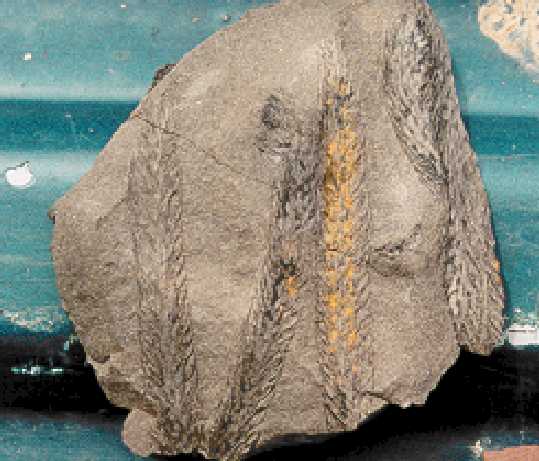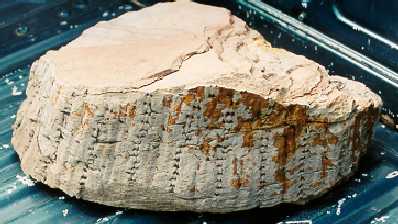sigillaria
07_08_cl_fossils445
Miscellaneous fossils found by Leisa.
February 18, 2006 - Pennsylvanian Fossils, Bibb and Shelby Co, AL
Another trip not put off for "rain, nor sleet, nor snow etc." Near-freezing temperatures, 100% chance of rain, an overcast sky and icy drizzle to begin the day were all on the menu at the BPS field trip in February to strip-mine sites in Bibb and Shelby county. To give you an idea of what we decided to brave, our host at our first stop, an active coal washing site, didn't show up until we called him, because he thought that nobody in their right mind would be out there! Well, you know, as Nancy remarked, "Once you start finding things, you forget how cold you are!" And this from somebody wearing a "Teenage ninja fossil-hunter suit." Of course, all were outfitted in attractive hard-hats, an MSHA requirement for visits to active mining sites. Just try keeping those on while bending over to find bits and pieces of neat stuff!!! Next time, we should bring little elastic strings to hold them on! Perhaps we should have been wearing them on the parts of our anatomy most-often turned towards the sky!
So, there were the most hard-core of the BPS'ers, happily finding plenty of plant fossils. Our first site was at a coal washing facility, where a variety of plant material was found, including numerous stem impressions, casts, and parts of tree ferns. Excited cries, of "Wow, look at this one!" made it hard to leave for the next site, an abandoned mine a few miles back in the woods, but, the word that we could lose the hardhats, among other attractions, won the gang over.
The second site was in the boonies, even for that area of the state, way down a long dirt road through the woods, through a locked gate, near where a prison used to house people who were busting rocks against their will, so to speak. This second site was very prolific, and members found tree ferns, calamites, and a few tree fern seeds. Some very nice specimens were found, including new "doorstops" for some members.
It was decided to move on to a third site, but the road was too muddy for us to drive up to it. This must be a good place, though, because at least one nice specimen was found near the entrance: a beautiful little silhouette of lacy fern leaves from so very long ago.
One more stop, to look at a site containing remains of bark impressions and calamites casts. There were some nice tree fern specimens in very fragile, easily crumbled rock. A number of fossils were in rocks too large to lug home, and our hands were too frozen, anyhow! Then we finally decided it was time to think about heading home for hot baths, hot laundry, hot food and a nice, long rest. Maybe our next trip will be graced with sunshine and gentle breezes!
--Edited by Vicki Lais
(photos courtesy Vicki Lais)
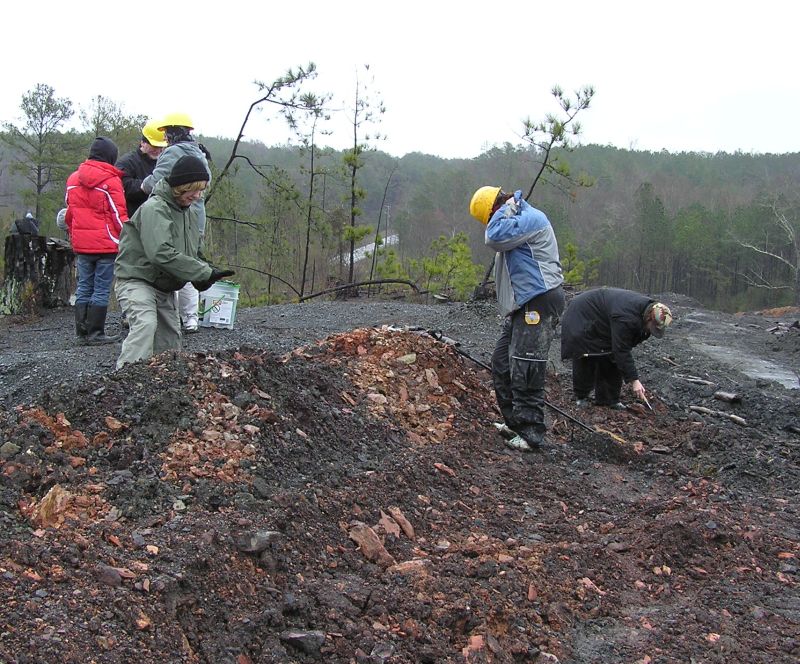
Some of the group on top of a spoil pile.
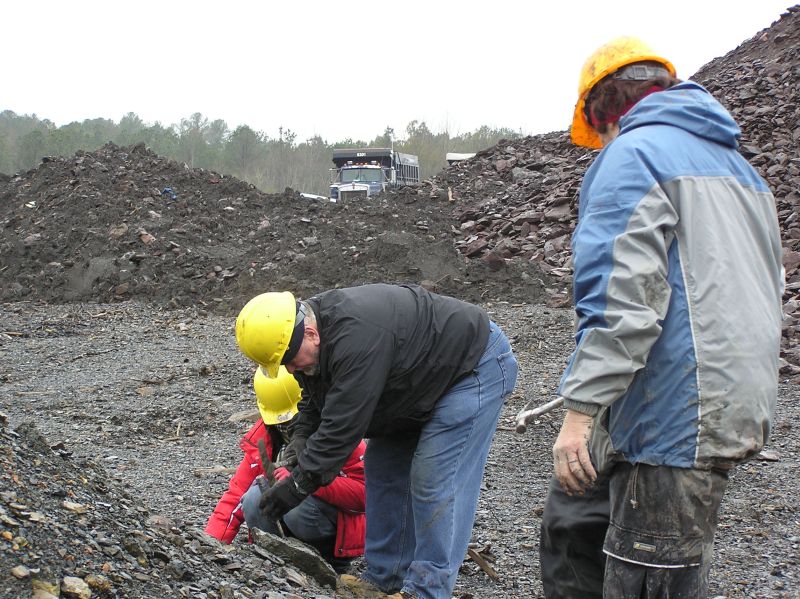
Greg demonstrating how to get the fossil out safely without taking home the entire rock.
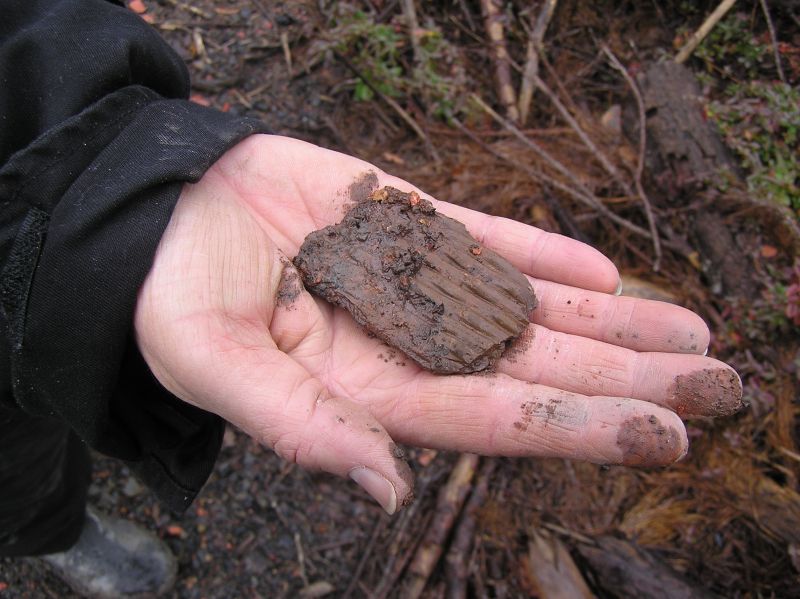
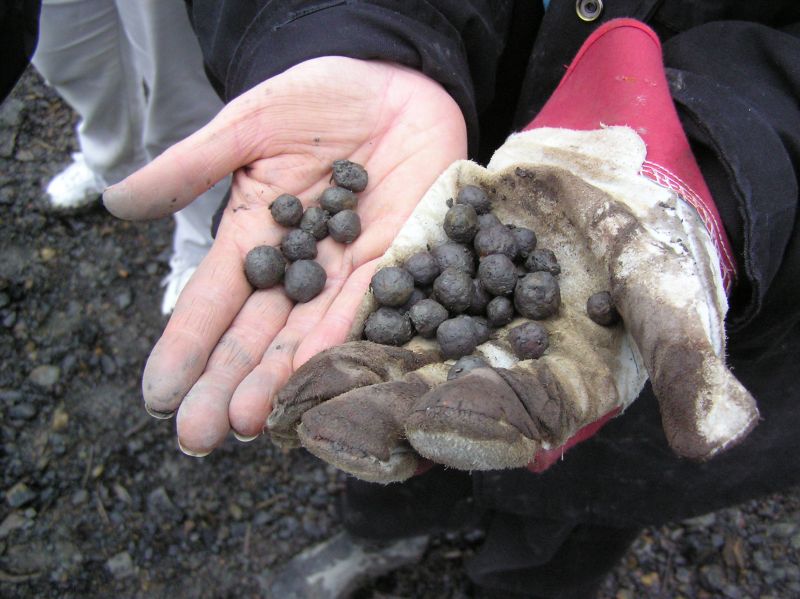
Small balls of iron ore used in the ironmaking process. These apparently date to the 1940's and 50's when coal mines in the area were in full force and trains carried various materials between the mines and the steel plants.
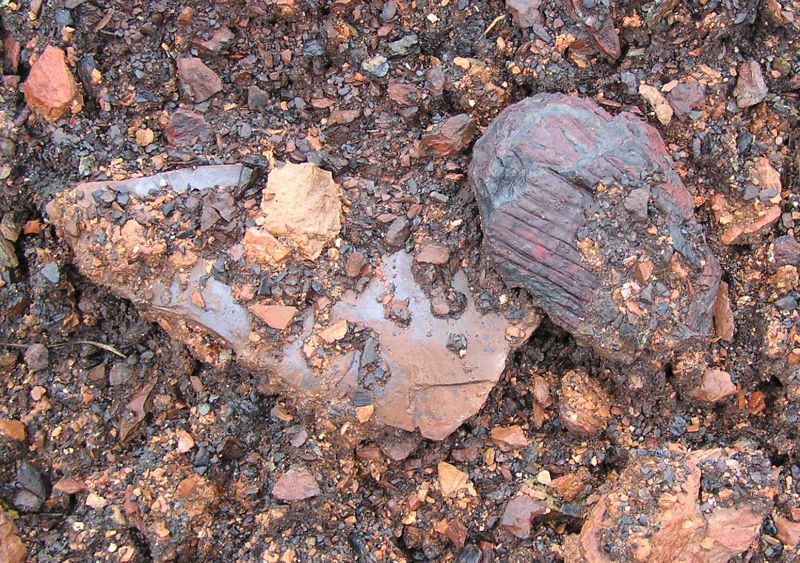
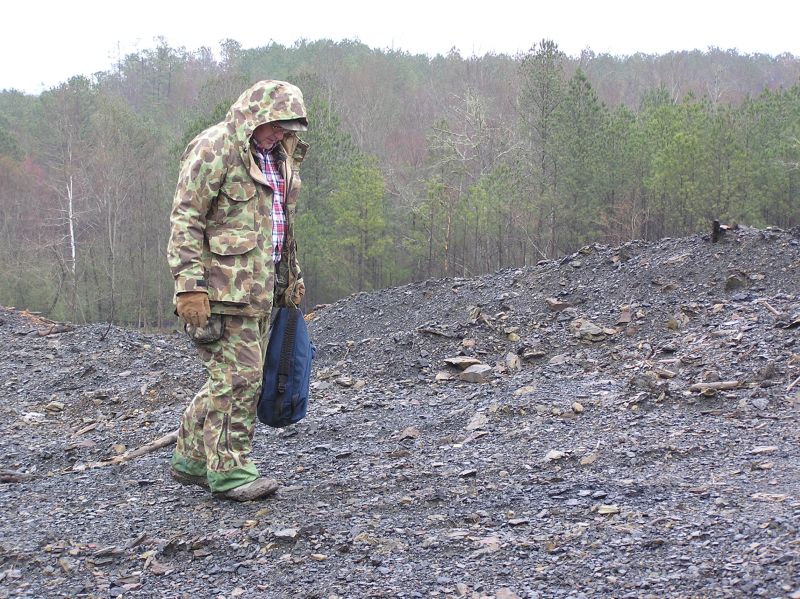
Bill searching for more fossils.
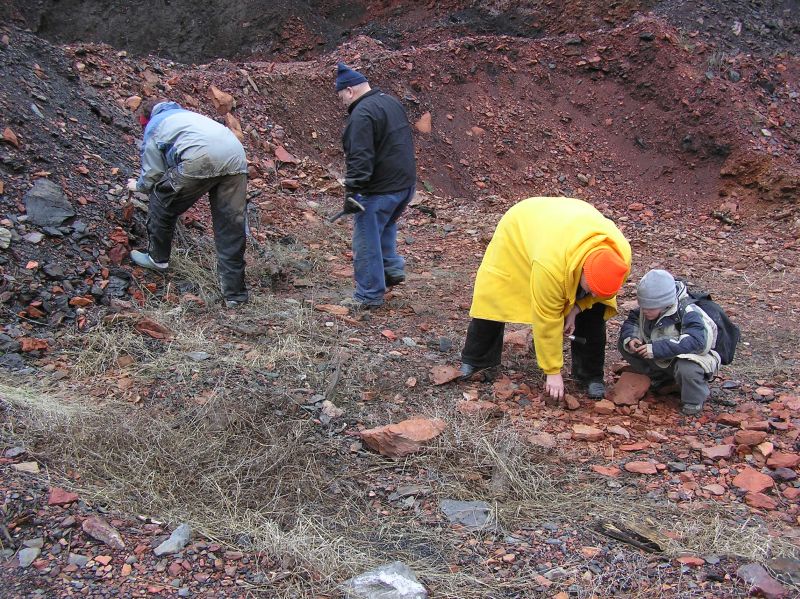
At our second site, many of the rocks were red rather than gray. This was due to the rocks being "burned" at some time in the past, perhaps with a smouldering coal fire.
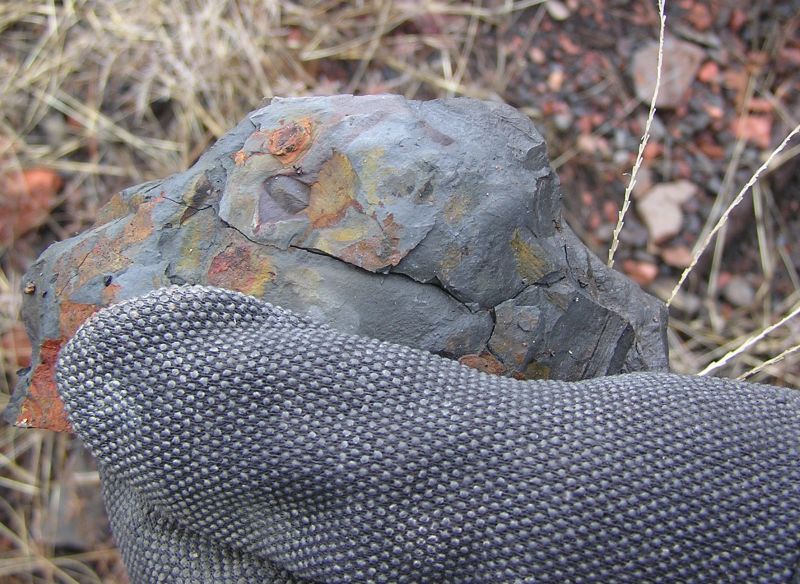
Nice "tree fern" seed fossil found by Greg.
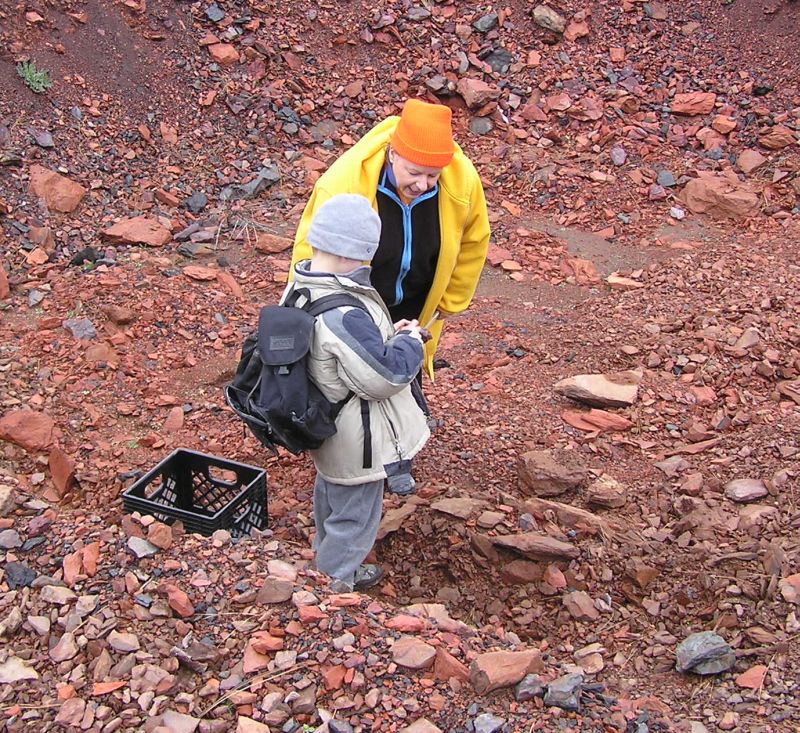
Leisa helping identify the fossil Ryan has found.
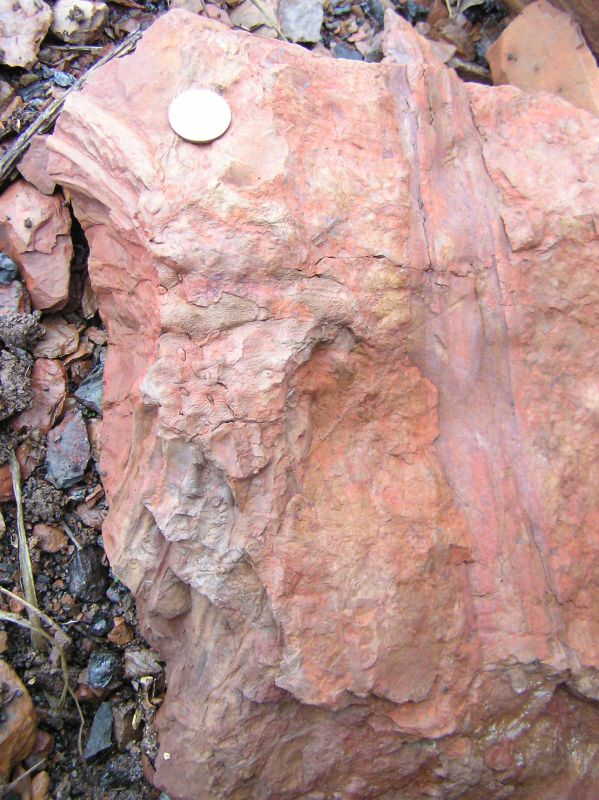
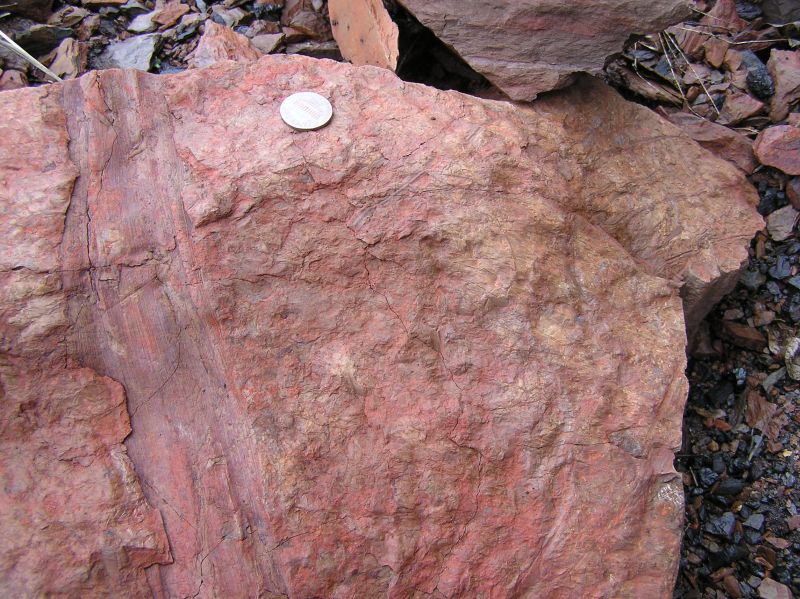
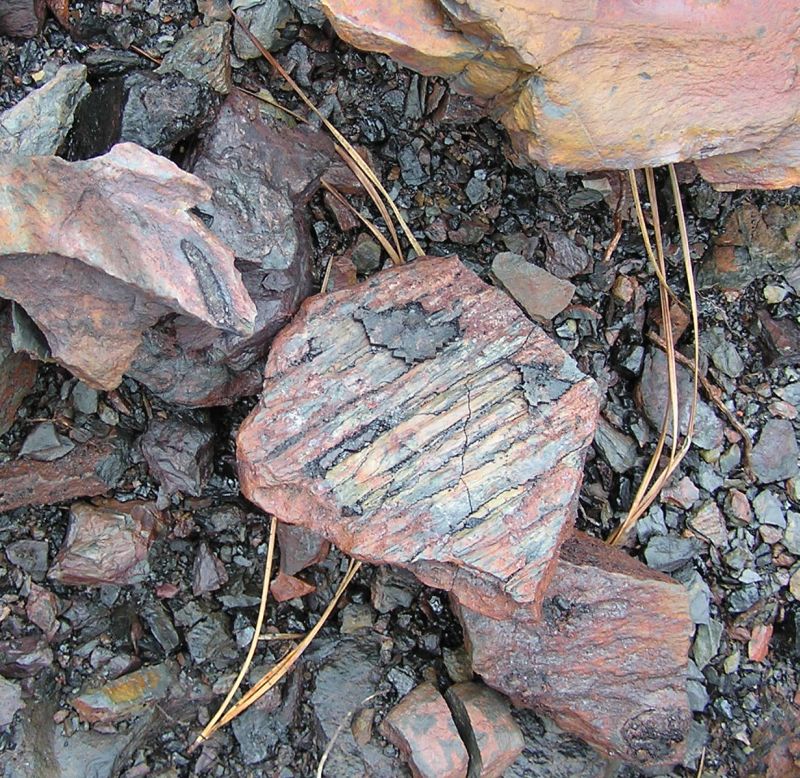
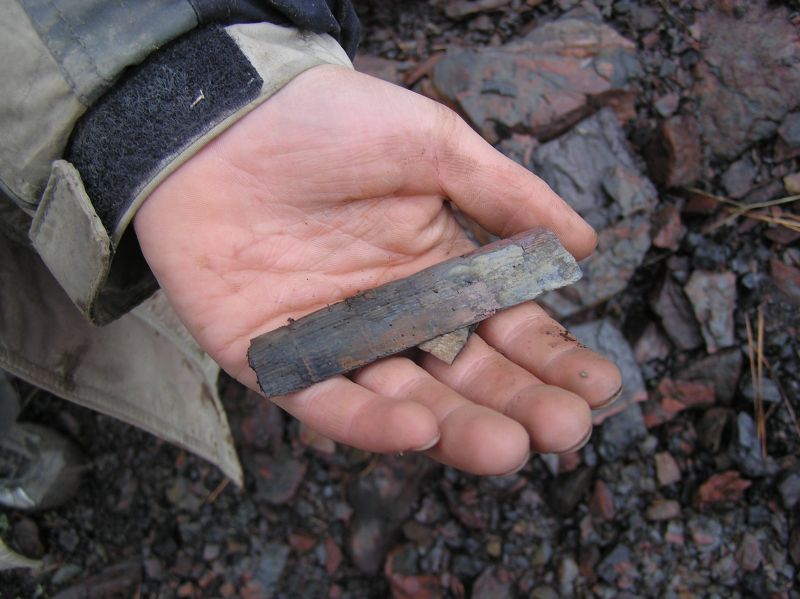
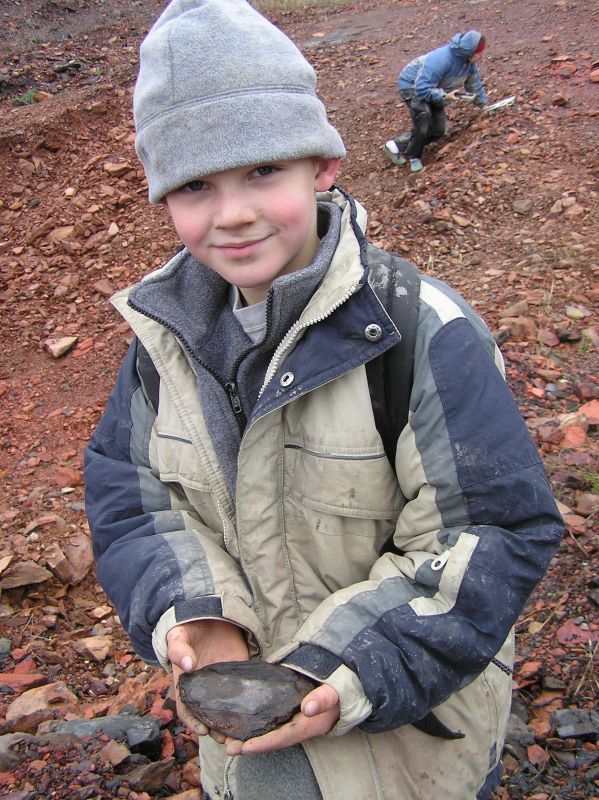
Ryan has found a nice fossil.
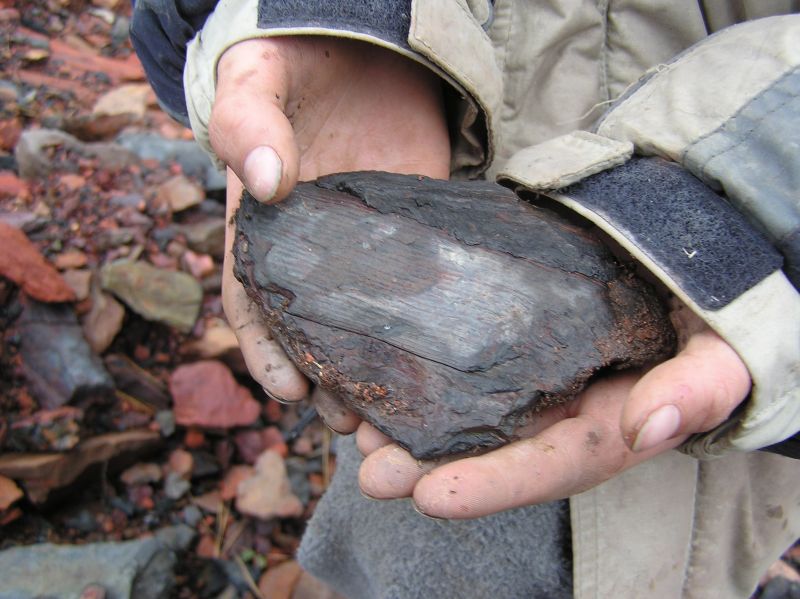
A closer look at the calamites Ryan has found.
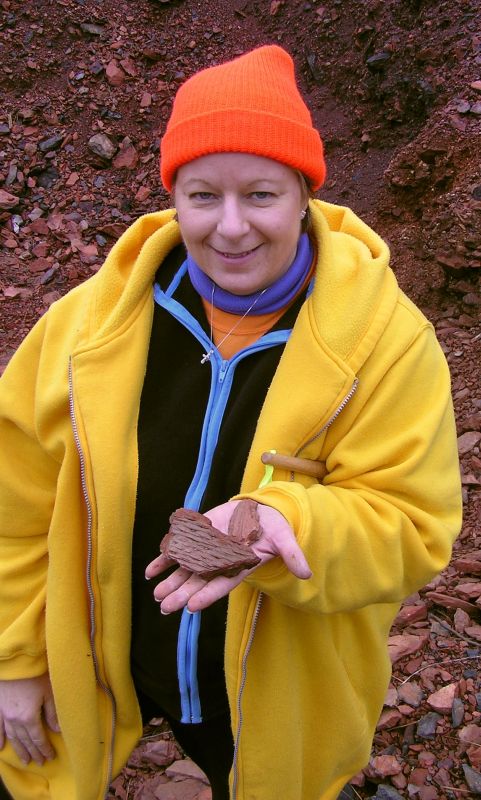
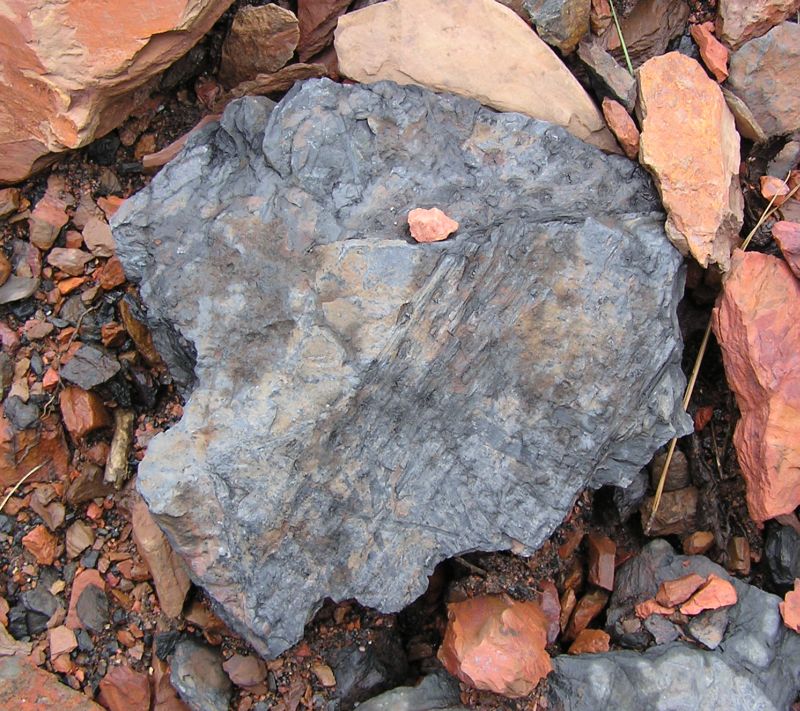
Stigmaria (roots of a Lycopod, possibly Lepidodendron)
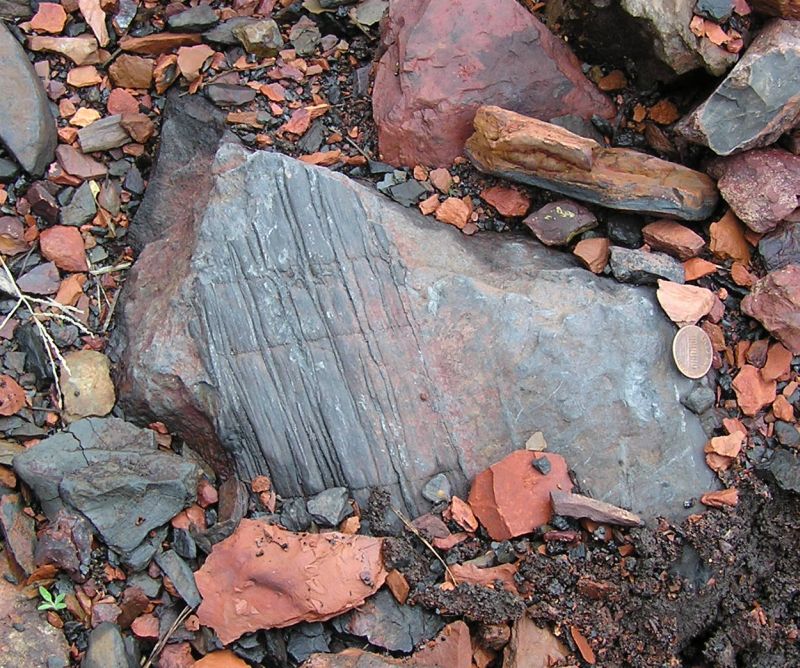
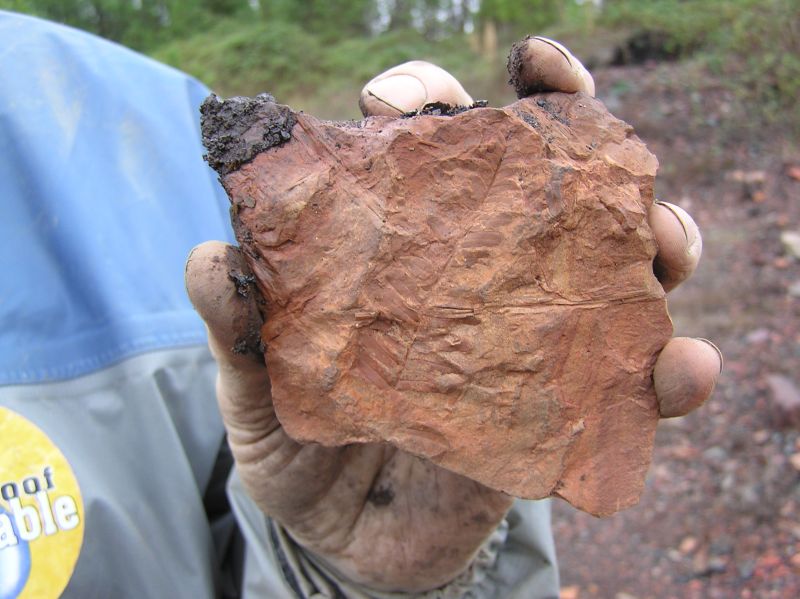
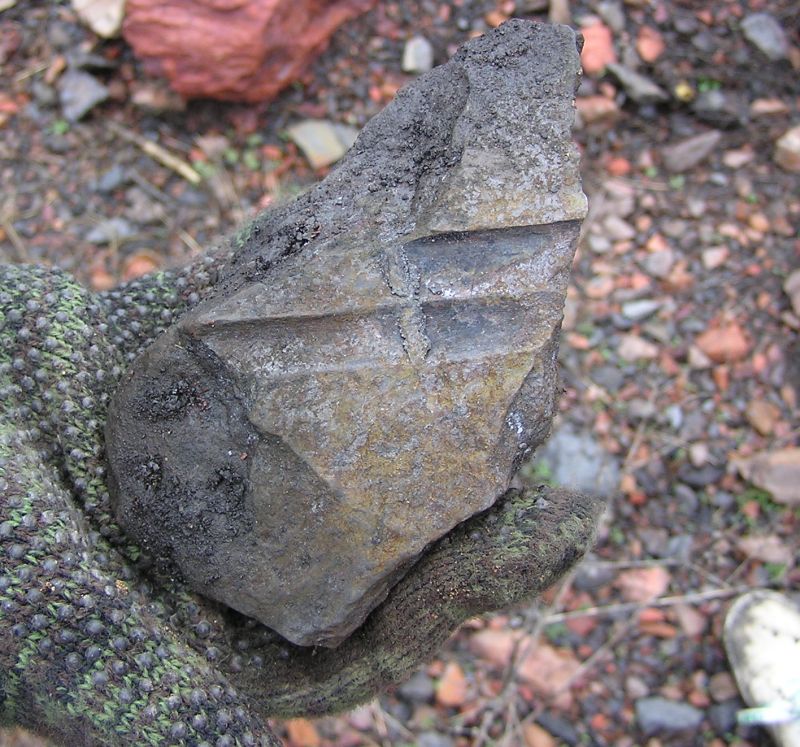
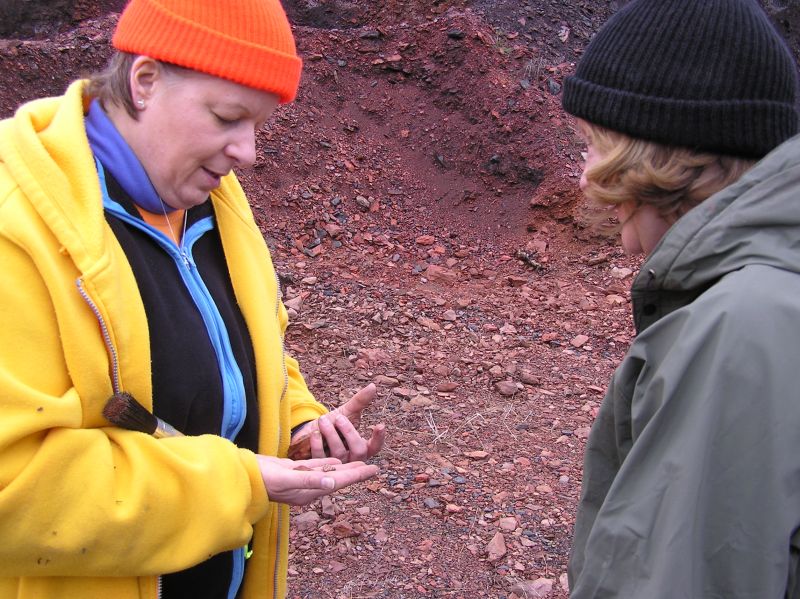
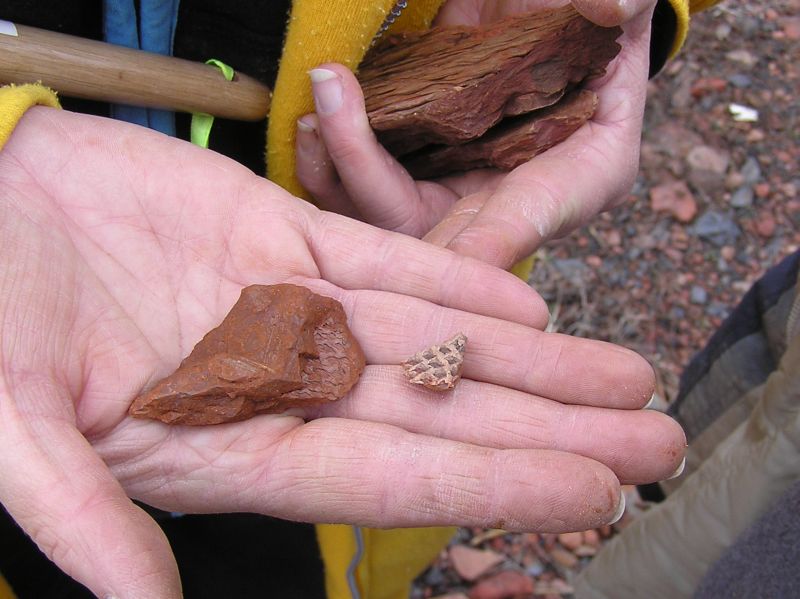
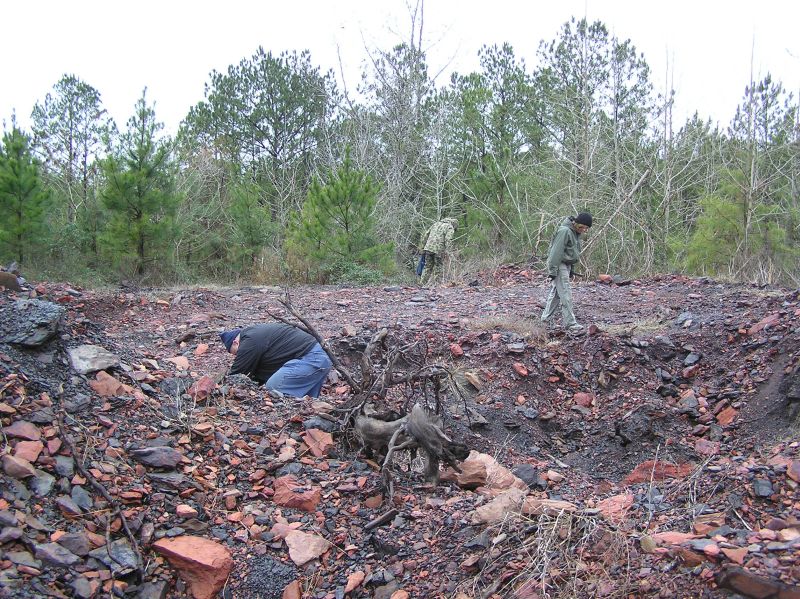
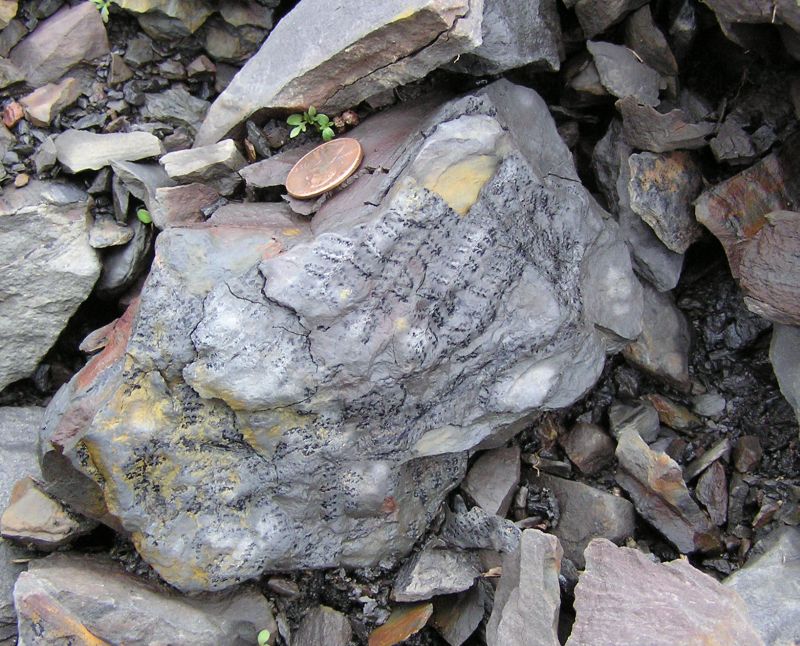
Nice fern, possibly Sphenopteris.
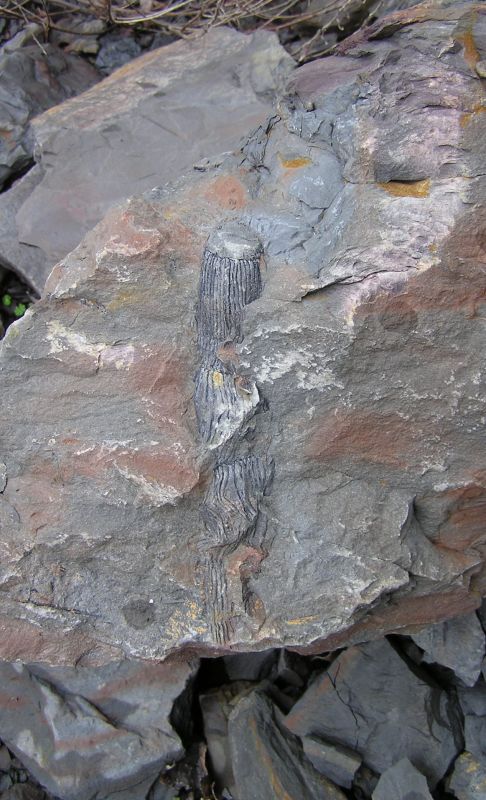
Calamites stem cast.
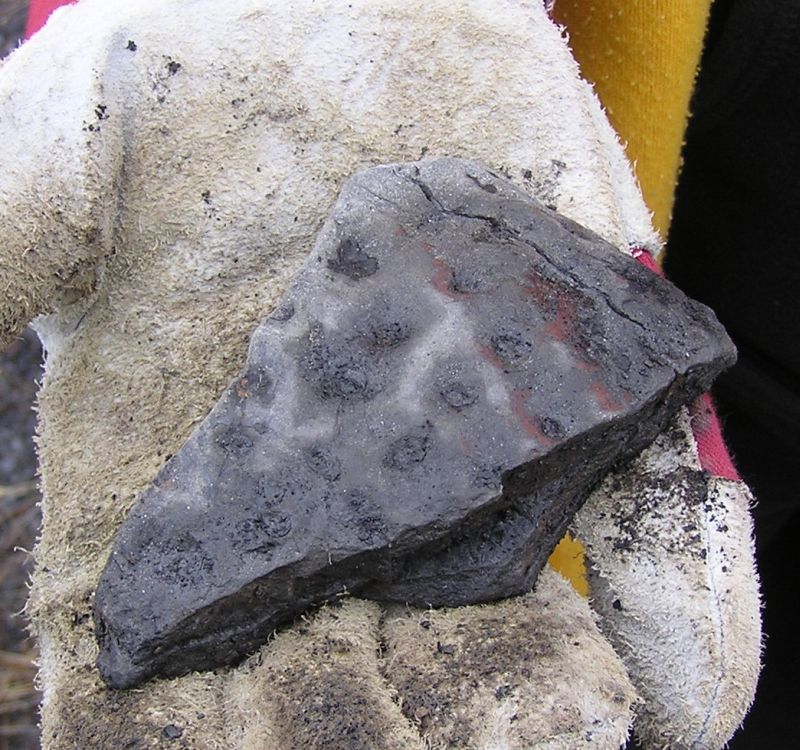
Probably Stigmaria, a lycopod root.
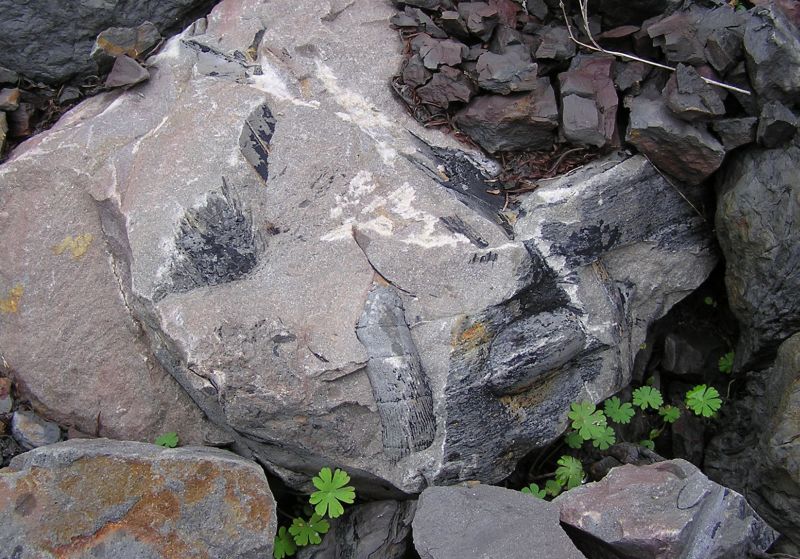
Calamites stem cast.
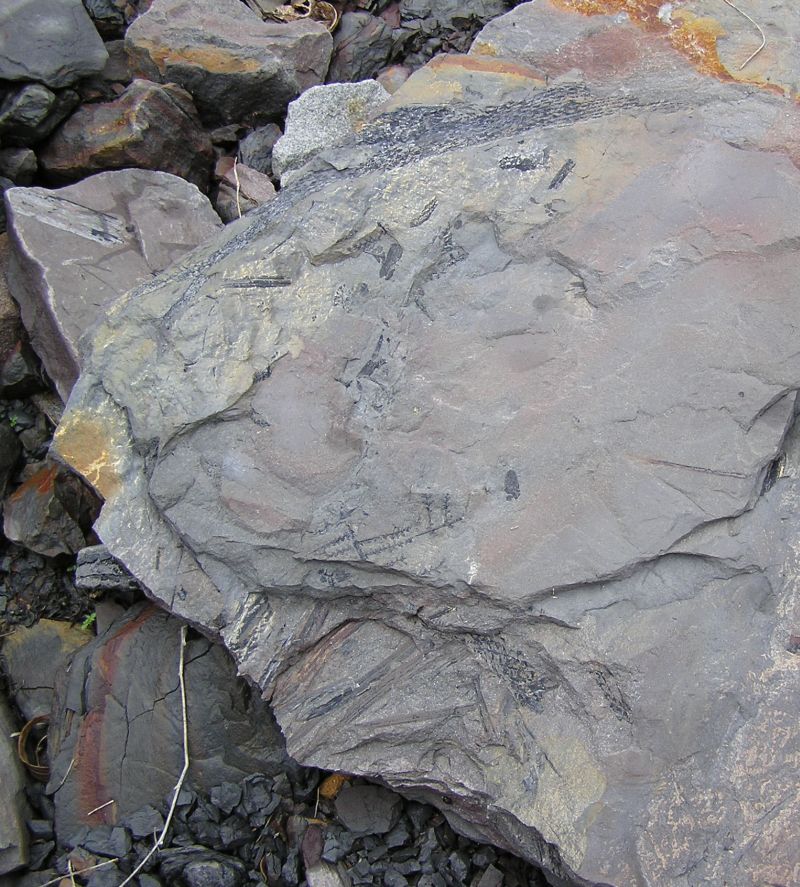
Tree fern outer stem covering and fern-like leaves, probably Sphenopteris.
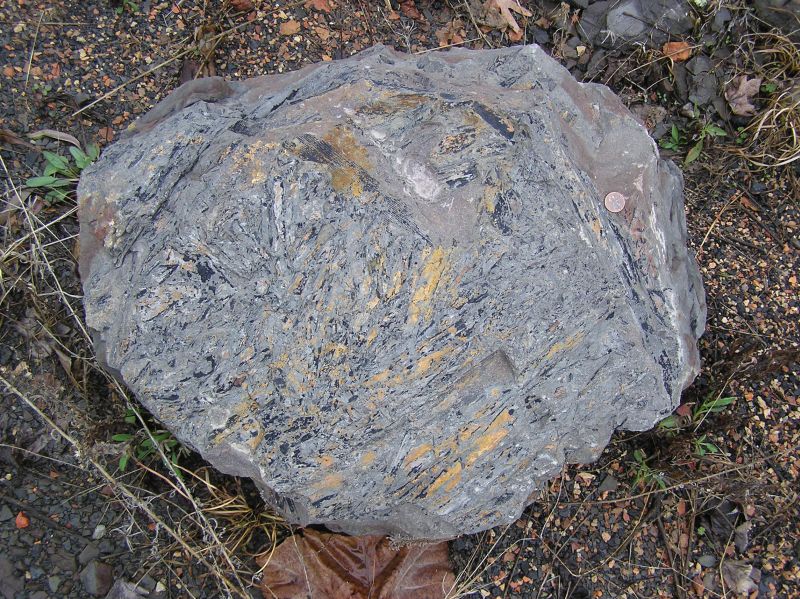
A hash of leaves and stems.
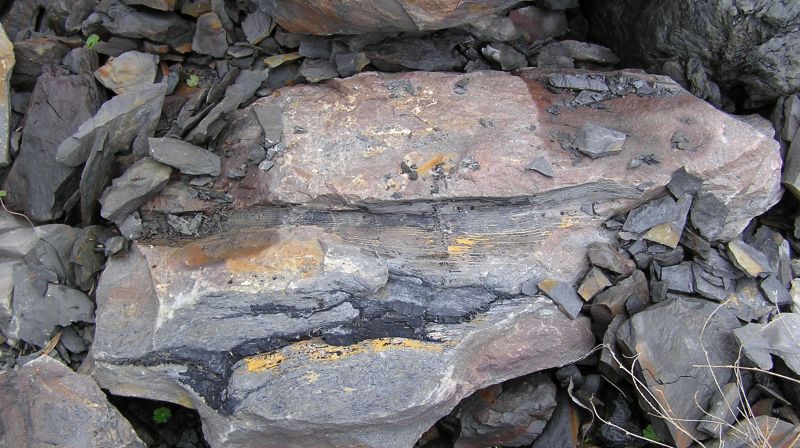
Calamites stem cast.
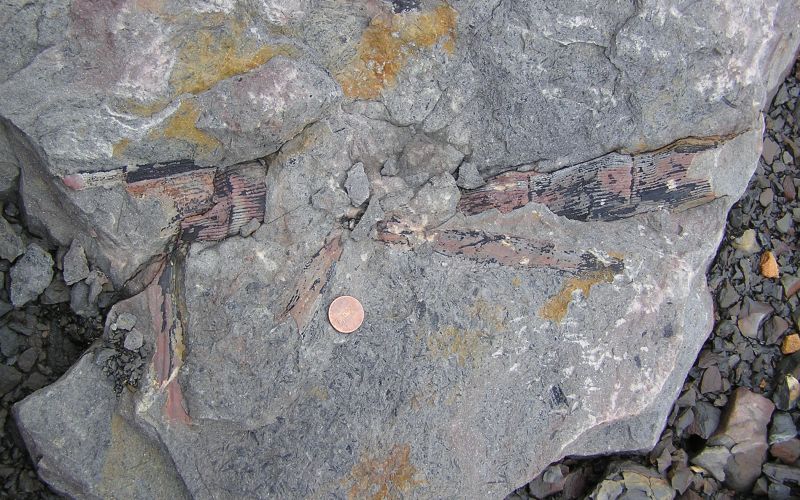
Nice calamites stem.
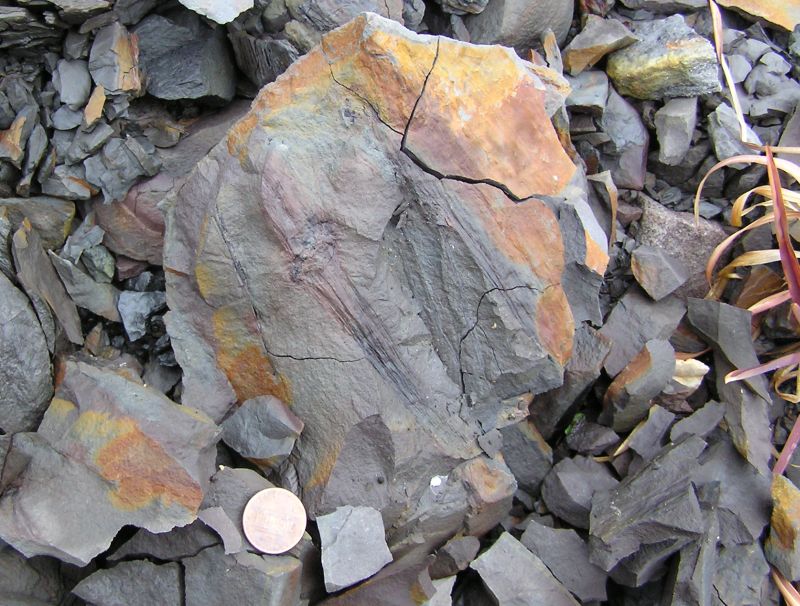
May 29, 1999 - Carboniferous Fossils - Jefferson Co, AL
Department of Physics and Astronomy
University of Alabama
Tuscaloosa, Alabama
The field trip on May 29, 1999, was to an abandoned strip mine in Kimberly that is now being re-excavated by the owner of the Warrior site which was described in the report of the March 27, 1999, BPS field trip. This is a new site for the BPS and we were most likely the first people to seriously look for fossils in the area, at least since the mine was active.
Although the postcard for the trip stated that we would be visiting the same Warrior site as on March 27, it was understood at the last BPS meeting that we would visit the new site and check it out. We decided to visit the new site first and left it as an option for attendees to visit the site on their own, since that site is much easier to find. About 15 people, including BPS members and guests, attended today's field trip.
--Edited by Vicki Lais
|
Ferns seemed less abundant, but good specimens were found nonetheless. Finely detailed fossils of the top foliage of arborescent lycopods were found in abundance. Bark impressions of Lepidodendron and Sigillaria were also found. The main difference between this site and the Warrior site is that the fossils at the latter site are concentrated in a small area that is easy to explore. At the Kimberly site, the fossils were spread out over a much larger area and finding them required a great deal of tenacious searching. Also, since you could not necessarily drive your vehicle up any of the steep hills, carrying a large fossil to your car was challenging to say the least. |
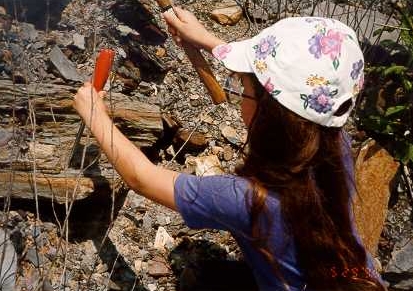 There were numerous highlights of this trip. One attendee showed me a rare (so far as I know) cast fossil of a small part of a stem of Cordaites, a gymnospermous tree with no modern relatives. The stem of this tree consists of a series of horizontal ridges and is easily distinguished from Calamites, but I had never seen one this nice before. Some very nice pieces of Calamites itself were found. The inimitable Ken Hoyle showed several of us two spectacular Calamites casts he found, each about 6 inches long and 4-5 inches in diameter. The two pieces were obviously part of the same plant, but he could not find any of the missing parts. There were numerous highlights of this trip. One attendee showed me a rare (so far as I know) cast fossil of a small part of a stem of Cordaites, a gymnospermous tree with no modern relatives. The stem of this tree consists of a series of horizontal ridges and is easily distinguished from Calamites, but I had never seen one this nice before. Some very nice pieces of Calamites itself were found. The inimitable Ken Hoyle showed several of us two spectacular Calamites casts he found, each about 6 inches long and 4-5 inches in diameter. The two pieces were obviously part of the same plant, but he could not find any of the missing parts.
|
||
Steve, Dena, and Molly Hand were also very successful in finding good 3D casts of Calamites, as well as a nice piece of Asterophyllites equisetiformis, the characteristic foilage of the branches of Calamites. Ken Wills, who previously spoke to the BPS last year, found a nice piece with many Calamostachys impressions, representing the cones of Calamites. Christina and Larry Hensley found a big rock with a stunning impression of the bark of a Lepidendron arborescent lycopod. It was beautiful but too big for anyone to carry. 3D casts of the rhizophore of Stigmaria ficoides, the root system of arborescent lycopods, were also found by several attendees, including myself. The largest, 15 inches long, was found by Bruce Relihan.
|
Particularly interesting were the stump fossils found at this site. On the top of a hill, I found three fossil stumps of Sigillaria. All three pieces showed the characteristic parallel bands of parichnos scars. The two largest pieces are about a foot in diameter and 3 to 6 inches thick. A smaller piece showed the strongest bands. I managed to get these to my car with difficulty, and needed help with one piece. Gerry Badger had a tougher time, however. He found a much bigger stump of Lepidodendron and practically had to roll it down to his car from some distant point. The stump looked to be 70-80 lbs in weight and showed weak scars. A very much larger stump was found by several others near the base of a hill. I heard it was maybe 30 inches in diameter. But by the time I heard about it, I had no energy to go and see it! Ken Wills and Bruce Relihan also found partial stump casts. In summary, this was quite an interesting field trip. When I first "scouted" out this site in April, I was not sure we would find much since casual searching during a period of one hour did not reveal many fossils. The intensive searching by attendees on this trip was much more revealing about the site, and showed it to really be nearly as good as the Warrior site. It will be worthy of a second visit in the future. |
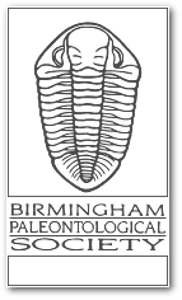
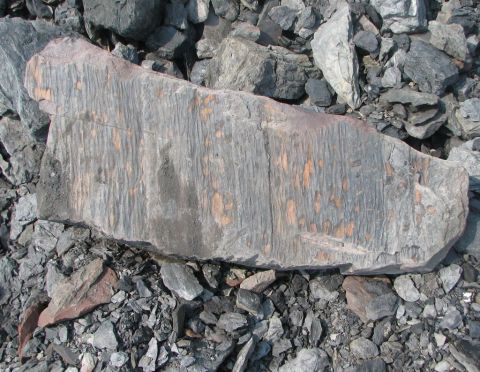
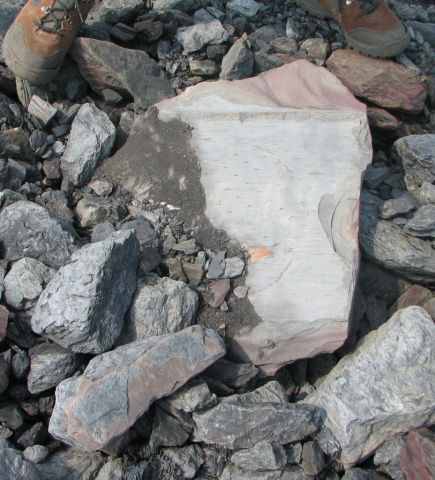
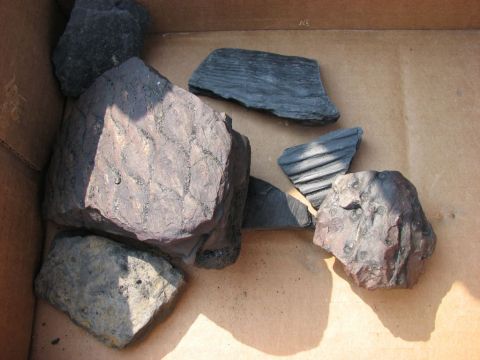
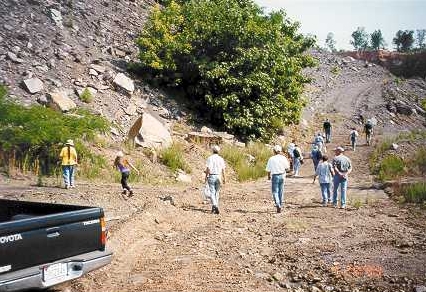 The site turned out to be a particularly good one for finding a variety of Carboniferous period plant fossils. The area was so vast that even with 15 people we really did not explore it all. Many rock piles surround an open area where we could park our vehicles. Fossils of Calamites, including 3D stem casts, stem impressions, foliage, and cones were abundant in some areas.
The site turned out to be a particularly good one for finding a variety of Carboniferous period plant fossils. The area was so vast that even with 15 people we really did not explore it all. Many rock piles surround an open area where we could park our vehicles. Fossils of Calamites, including 3D stem casts, stem impressions, foliage, and cones were abundant in some areas.